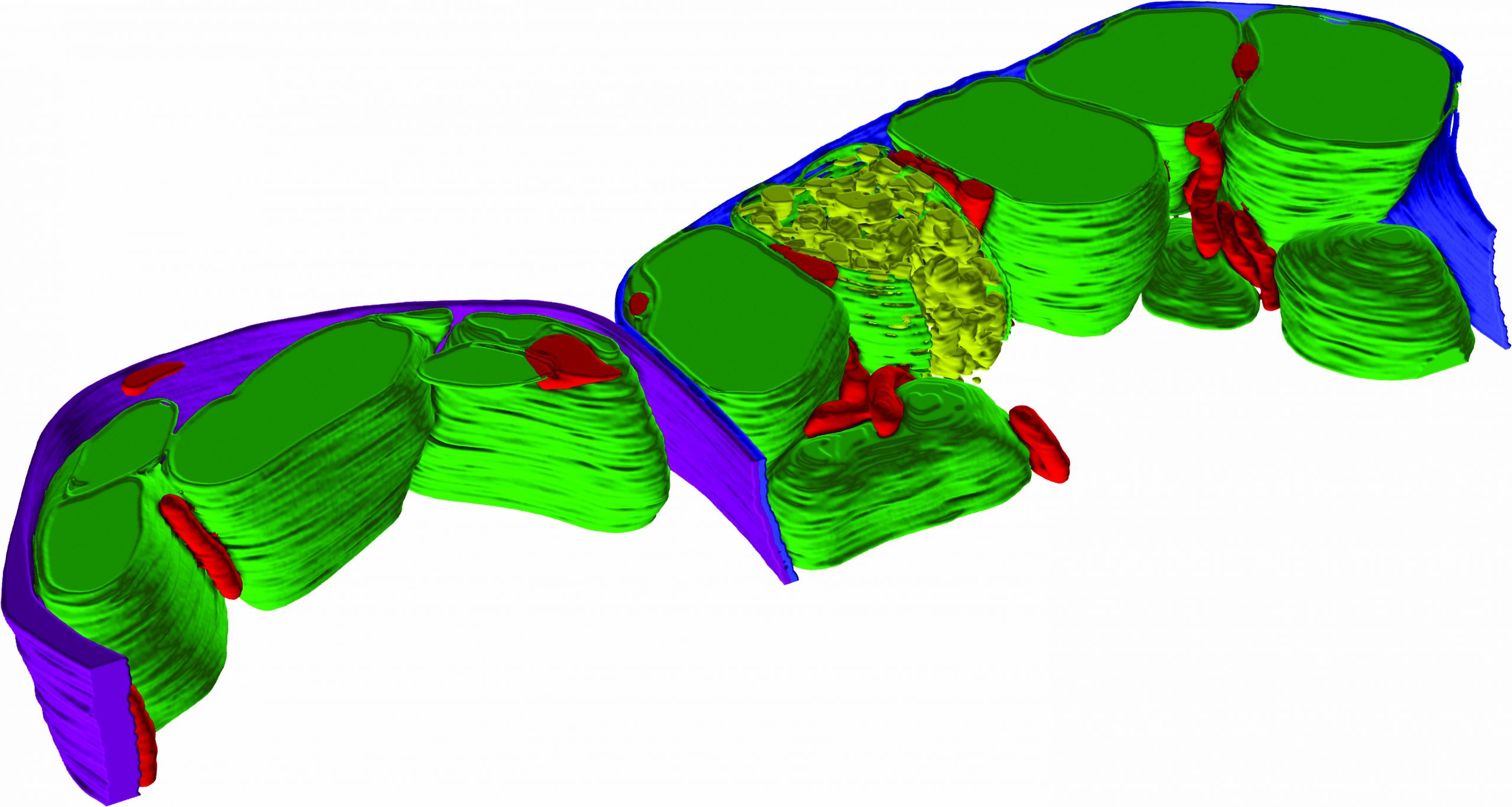Leaves are the pivotal points for the exchange of water, carbon, and energy between the biosphere and the atmosphere. So far, it has been difficult to measure these processes within the leaf at a microscopic scale. Plant biologists have resorted to highly simplified 2D imaging methods and 1D models to study 3D leaf processes. Measurements within leaves in 3D would enable a consensus framework to be established so leaf processes, such as photosynthesis and water transport, can be accurately modelled through simulations.
Prof. Margaret Barbour from the University of Sydney won a Sydney Research Excellence Initiative 2020 grant from the University to bring together the world’s leading plant biologists working in this area to review the current state of knowledge and define priorities for future research.

Data reconstruction showing parts of two cells in a wheat leaf. Cell walls in blue and purple, chloroplasts in green, mitochondria and peroxisomes in red, and thylakoid grana in yellow. Taken by Elinor Goodman and Minh Huynh at Sydney Microscopy and Microanalysis.
The resulting workshop spawned an international collaboration across three continents including researchers from Harvard, Yale, the University of California Davis, the University of Queensland and the Australian National University. This led to a landmark paper published in Trends in Plant Science in October 2018. It showed how recent advances in imaging and computational technology are enabling a data-rich scientific pipeline that integrates 3D leaf measurement, anatomical modelling, and biophysical simulation from the sub-cellular to the tissue level and beyond. Imaging techniques, including serial block face imaging, conducted at Microscopy Australia’s University of Sydney facility, Sydney Microscopy and Microanalysis, were fundamental to this visualisation, providing high-resolution images of internal cellular anatomy.
The proposed 3D virtual leaf will substantially improve our understanding of the many nuances of leaf anatomy and function.
It will deliver fundamental insights into:
The group’s goal for the next decade is to pursue a coordinated, collaborative study of detailed leaf anatomy for several model species representing a range of plant types. They can then apply the resulting data to model key 3D leaf processes including photosynthesis, respiration and water transport.
July 24, 2018